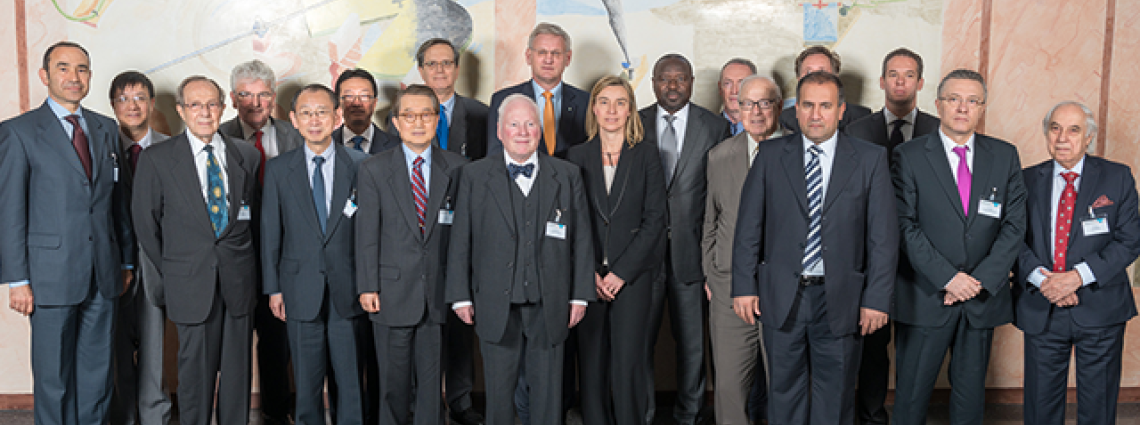Group of Eminent Persons meets in Sweden to promote the CTBT
Swedish Foreign Minister Carl Bildt
The positive developments of the Iran nuclear negotiations can help the cause of the CTBT.
Former U.S. Secretary of Defense, William Perry
We lived through one very dangerous nuclear arms race during the Cold War. We do not want to live through another one. We were lucky that that arms race did not result in nuclear catastrophe. We may not be so lucky a second time.
Left to right: Hans Blix, former IAEA DG; Des Browne, former UK Secretary of State for Defence; and Nobuyasu Abe, former UN USG for Disarmament Affairs
The inauguration of the GEM last September has reaffirmed my belief that the eminent personalities that have become part of this Group possess the insight and experience to finally break the political stalemate that has engulfed the CTBT in recent years.
Italian Foreign Minister Federica Mogherini
The CTBT is unique – although not yet in force, its stations are fully operational, detecting any test by the North Koreans as well as providing data about tsunamis.
Nobuyasu Abe (left) with Des Browne.
Left to right: Kevin Rudd, Hans Blix and Lassina Zerbo during a panel discussion, 11 April 2014
Movement by the United States and China is key for advancing the CTBT's entry into force.
The way forward
10 Apr 2014
